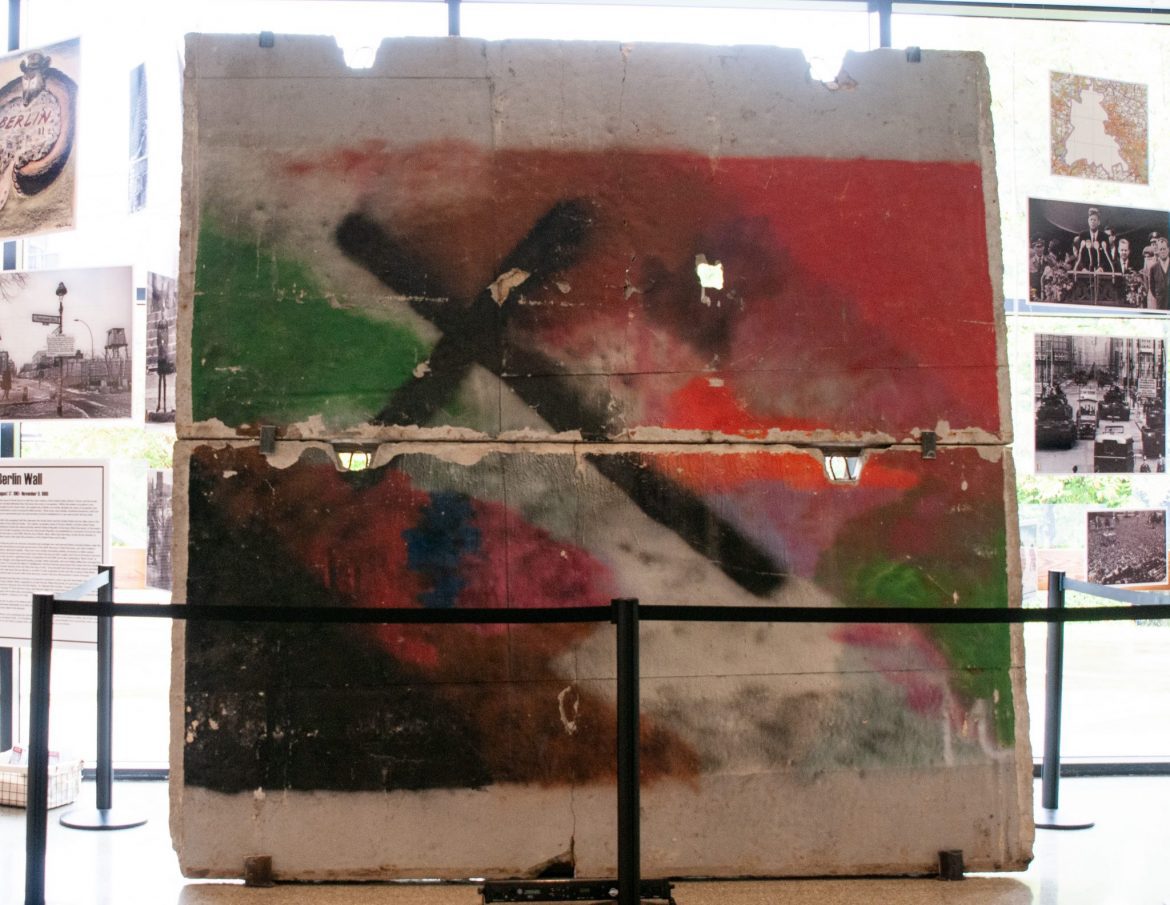Two slabs of the Berlin Wall were displayed last week in Benson Auditorium. The wall will remain in the Benson’s lobby through November.
Provided by the Clifton L. Ganus Jr. Endowment for History and Political Science, Dr. Kevin Klein, chair of the fund and history and political science professor at Harding, uses this funding to provide opportunities for Harding students to be exposed to history in a fresh way, including bringing the Berlin Wall to campus.
November 2019 marks the 30th anniversary of the fall of the wall, which was one of the reasons for bringing it to Harding.
The other reason, according to Klein, is that October marks the month when many things related to the Cold War took place, including Sputnik and the Cuban Missile Crisis, which led to the Berlin Wall coming down in 1989.
“It is symbolic to present it in October,” Klein said.
According to Klein, 30 years is significant for the study of history, because it is about the length of time required for the dust to settle.
“We typically wait until the dust is settled, because frankly, political actors start to get old enough that two things happen: Their tongues get looser, and their fingers get looser on documents,” Klein said. “Sometimes because they die.”
Ripley Entertainment of Kissimmee, Florida, bought 32 10 x 10 pieces of the Berlin Wall in 1991 and brought it back to the U.S. Occasionally the company allows organizations to use sections of the wall for educational purposes. Four tons of the famous wall came to Searcy in a truck from this company.
“It is important that we never forget the events that have brought us to where we are today, and the tearing down of the wall is one of the most monumental,” senior Drew Landis said.
According to The Local, from 1961 to 1988, using cars, trains, tunnels, zip-lines, hot-air balloons and an ultralight, around 5,000 people escaped East Germany through the wall. At least 138 died in the attempt. Many of them died in an area known as the “death strip” between the concrete wall and countless fences behind it.
The west side of the wall became a place where graffiti and political art shared space during the Cold War. Today a section of the wall has been retained for that purpose; but now the graffiti is on the east side, which was formally the Soviet sector of Berlin.
Ironically or symbolically, the pieces displayed at Harding include graffiti with a cross.
“I found it very serendipitous that this portion of the wall has a cross,” Landis said.
The number of people who potentially experienced the wall during Homecoming is staggering.
“Five thousand students pass through the Benson for chapel,” associate professor of political science and public adminstration Lori Klein said. “An estimated 6,000 students, alumni and others had access to it as they came in to view the Homecoming musical.”
Local school children who attended the matinee for Matilda on Oct. 21 saw the wall as well.
“I am so grateful to the founders of the Ganus Endowed Chair for funding this exhibit and making this possible,” Klein said.
